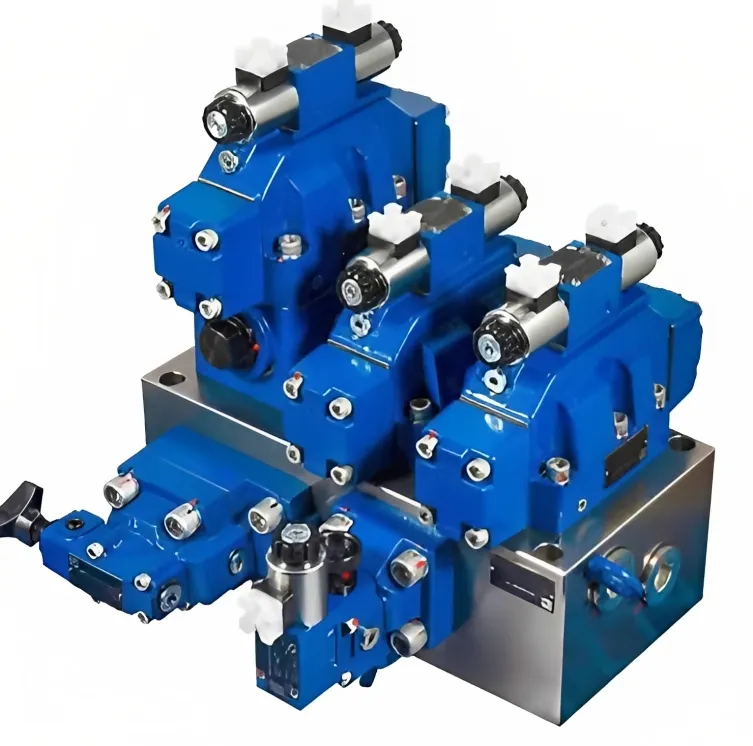The Role and Function of Hydraulic Manifolds in Hydraulic Systems
A hydraulic manifold is a crucial component utilized in hydraulic systems to
regulate fluid flow between pumps, actuators, and valves.
Its primary purpose is to provide a convenient and efficient means of
connecting multiple hydraulic components into a single, cohesive system.
In this article,
we will explore the key functions and benefits of hydraulic manifolds in improving the efficiency,
reliability, and durability of Hydraulic Systems.

Function:
Hydraulic manifolds serve as centralized control points for the distribution
and regulation of hydraulic fluid throughout the system.
They are designed to maintain a constant fluid pressure and flow rate,
which is essential for ensuring optimal performance and smooth operation of the system.
By precisely controlling fluid flow, manifolds enable synchronized movements of hydraulic actuators,
allowing for efficient power transmission in various applications.
Benefits:
1.Simplification of System Design
Hydraulic manifolds provide a compact and organized solution for routing hydraulic fluid,
eliminating the need for multiple individual connections. This simplifies the overall system design,
reduces the number of potential leakage points, and streamlines maintenance and troubleshooting processes.
2.Enhanced Reliability
Manifolds play a crucial role in preventing hydraulic problems that can arise from improper component connections.
By ensuring proper and distribution of fluid, they minimize the risk of leaks,
pressure drops, and system malfunctions.
Additionally, manifolds can incorporate pressure relief valves and other safety features,
further enhancing system reliability.
3.Improved Efficiency
The centralized nature of hydraulic manifolds promotes efficient fluid flow and distribution.
By maintaining constant pressure and flow rates,
they optimize the system's energy consumption and overall performance.
This leads to reduced energy wastage, increased operational efficiency,
and improved productivity in hydraulic applications.
4.Flexible Customization
Hydraulic manifolds can be customized to meet the specific requirements of different hydraulic systems.
They can incorporate various features, including ports for attaching hoses or fittings, additional valves,
sensors for monitoring performance, and integration with electronic control systems.
This adaptability allows for tailored solutions,
ensuring optimal functionality and compatibility with the overall hydraulic system.
In conclusion, hydraulic manifolds play a vital role in regulating fluid flow within hydraulic systems.
By providing a centralized control point for fluid distribution, they enhance the efficiency, reliability,
and durability of hydraulic systems. With their ability to simplify system design, improve energy efficiency,
and enable customization, hydraulic manifolds have become integral components in a wide range of hydraulic applications.
Saivs brand
- Ultra-Low Pulse Vickers Eaton Double 20V Vane Pump
- SL6 SL10 Rexroth Check valves pilot operated
- A6V28/A7V55~500 Rexroth Hydraulic Pump Parts
- Rexroth Throttle and throttle check valve MG MK MK6G MK8G MK10G MK15G MK20G MK25G MK30G
- Hydraulic Cylinder for Scissor Lift
- Kawasaki K5V series Hydraulic pump
- GM6 Series Low Speed Radial Piston Hydraulic Motor
- A4VG series rexroth hydraulic pump
- Two Way Two Position Normally Closed SV08-2NCSP-L-M
- A10VSO16~45/A10VO45/52/A10VSO63~140 rexroth parts